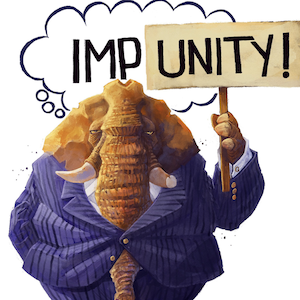Commentary: The shutdown is over, but not the need to reform SNAP
Published in Op Eds
The longest government shutdown in history has come to an end. One major pressure point in the 43-day congressional stalemate was the exhaustion of funding for the Supplemental Nutrition Assistance Program (SNAP for short, or more familiarly, food stamps) on Nov. 1, due to the shutdown.
Given the massive size of SNAP — nearly 42 million people, or one in eight people in the U.S. are on the program — the shutdown left many people without benefits and uncertain when they might receive them.
The entire drama over SNAP could have been avoided (not to mention the entire shutdown) if Democrats would have decided weeks ago to stop blocking the clean continuing resolution Republicans had passed.
Leaving SNAP beneficiaries uncertain about receiving benefits isn’t good policy. But it’s not the only bad policy surrounding SNAP that Congress should address.
That one in eight Americans rely on the federal government for food assistance reflects the failure of SNAP to promote upward mobility — to break the cycle of poverty, in other words.
And SNAP is just one part of a much larger welfare system that now includes roughly 90 programs at a cost of well over $1 trillion a year. This system is leaving people dependent, rather than helping them improve their lives and exchange welfare benefits for self-reliance.
Policymakers have fashioned welfare policy on the notion that poverty is primarily a material problem, one that can be solved with one-way government transfers of cash and benefits. Focusing on the symptoms of poverty rather than the causes has led to ever-increasing welfare spending and tragically also to decreased connection to those things that protect against poverty: work and family stability.
SNAP has ballooned over the years due to policymakers loosening the financial criteria, creating loopholes that allow states to bypass asset tests for applicants, and most recently the major Biden-era boosts to SNAP benefits.
SNAP spending spiked during COVID due to temporary funding increases. Then, when those funding increases were about to expire, the Biden administration made permanent boosts to SNAP benefits via executive overreach. Today, SNAP spending is well above pre-pandemic levels.
The One Big Beautiful Bill made some important reforms to SNAP to move it in the right direction, including improved work requirements. But there is still more to do to get SNAP on the right track.
During the shutdown, some states vowed to use some of their own dollars to provide November SNAP benefits. Congress should make this a permanent policy.
One of the reasons SNAP and the rest of the U.S. welfare system has become so large is precisely because of how the funding currently operates. Federal politicians hand dollars to state bureaucrats who then turn around and distribute the benefits. There is little incentive for states to see that the benefits are being used appropriately when states don’t have skin in the game.
States contributing their own dollars to SNAP would increase the likelihood that the program serves those who need it most and that people do not languish there needlessly. States taking more financial responsibility for SNAP would also help avoid problems like uncertainty about receiving benefits whenever there’s a congressional budget showdown.
So yes, the government shutdown is over, and SNAP will resume. But SNAP should not remain on its current path. Congress should continue what it started earlier this year and reform SNAP—along with many other welfare programs—to promote upward mobility for Americans.
____
Rachel Sheffield is a Research Fellow in welfare and family policy at The Heritage Foundation.
_____
©2025 Tribune Content Agency, LLC.























































Comments